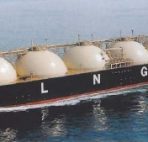VANCOUVER, Sept. 27, 2016 – The Government of Canada has announced its decision to approve the $11 billion Pacific NorthWest LNG Project.
Environment and Climate Change Minister Catherine McKenna, accompanied by Natural Resources the Minister Jim Carr, and Fisheries, Oceans Minister Dominic LeBlanc, announced the Federal Cabinet’s decision at a Coast Guard base in Richmond, British Columbia.
“The Pacific NorthWest LNG Project will deliver thousands of good middle-class jobs and will help pay for schools and roads and social programs that enrich people’s lives”, said Minister Carr.
“We are moving forward with natural resource development in a sustainable manner, because we have an obligation to leave the planet in better shape than we found it,” ke added.
The Pacific NorthWest LNG Project is one of Canada’s largest resource development projects with a total capital investment of up to $36 billion when accounting for upstream natural gas development.
During construction, the project will create an estimated 4500 jobs and an additional 630 direct and indirect jobs during the operation of the facility. Local First Nations communities will also benefit significantly through agreements reached with the proponent.
The project is subject to over 190 legally binding conditions, determined through extensive scientific study that will lessen the environmental impacts of the project.
For example, Pacific NorthWest LNG Ltd. will be required to comply with mitigation measures that will minimize adverse effects on fish, fish habitat, marine mammals, wetlands, migratory birds, and human health.
Electrification of upstream natural gas processing faclities will also help to lessen emissions.
The project will be subject to a rigorous compliance and enforcement regime, which includes establishing environmental monitoring committees comprised of Indigenous peoples, and federal and provincial representatives, for the first time ever.
Technical experts will monitor the project and will have the authority to stop project activities that do not comply with the conditions.
The decision also imposes – for the first time ever – a maximum cap on annual project greenhouse gas emissions.
Decisions based on science
Scientific experts from Natural Resources Canada, Transport Canada, Fisheries and Oceans Canada, Environment and Climate Change Canada and Health Canada provided scientific and technical advice throughout the assessment. Indigenous peoples brought forward traditional knowledge including observations about marine conditions that prompted additional study.
The review period was extended so that federal scientists could thoroughly assess the proponent’s information, require supplementary studies and review additional external research.
As a result of this review, mitigation measures and monitoring requirements were put in place. Critically, scientists found no significant effects on fish with the legally-binding mitigation and monitoring conditions.
Views of the public and affected communities considered
The Canadian Environmental Assessment Agency conducted extensive consultations throughout the environmental assessment and also provided four formal opportunities for public comments and input.
Over 34,000 comments were received from individuals and groups on the draft environmental assessment report.
Concerns raised by the public included effects on fish and fish habitat, the volume of greenhouse gas emissions and impacts on indigenous rights and title.
Support for the project focused on the project’s economic impact and job creation. This valuable public input was considered. Some communities expressed concern about the impact of increased marine shipping.
Indigenous peoples consulted
Consultations were extensive with Indigenous communities with funding of over $480,000 provided to support their participation in the environmental assessment. Project conditions address the impact on the current use of land and resources by Indigenous peoples for traditional purposes.
Indigenous groups near the project site participated in technical working groups and will participate in environmental monitoring.
Greenhouse gas emissions assessed
The decision imposes a maximum cap on annual project greenhouse gas emissions. This cap means direct greenhouse gas emissions from the project will be capped at a maximum of 4.3 Mt of CO2e per year, 900,000 tonnes less than what had initially been proposed by the proponent.
In addition, upstream emissions will be reduced by the Government’s commitment to regulate methane emissions from the oil and gas sector, and by British Columbia’s plan
“The only way to get resources to market in the twenty-first century is if they can be done in a responsible and sustainable manner,” added Minister McKenna.
“This decision reflects this objective. With the legally binding conditions we are putting in place and with British Columbia’s commitment to increase its price on carbon in line with the Pan Canadian Framework, I am confident that we will minimize the environmental impacts of the project and ensure that it proceeds in the most sustainable manner possible.”
Associated Links
- Environmental Assessment Decision Statement and Conditions
- Environmental Assessment Report and project information
- Interim approach and principles for environmental assessments

